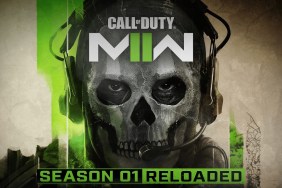Gravity Wins
If jumping out of planes were safe and affordable, it just wouldn’t be as exciting. So since risk is proportional to being extreme, jumping with budget skydiving outfits in Zimbabwe should be more fun. And jumping without a parachute? Hella intense.
Jumping out of a plane into the most deadly war in human history, then, should be off the charts.
[image1]So why is it that Medal of Honor: Airborne, EA’s innovative World War II shooter that puts you in the parachute straps of an airborne infantryman, hits the dirt with a hollow thud? To be metaphoric, its parachute never opens up. The game drops in a freefall towards the inevitable used game bin. And to be literal, Airborne is just dull.
You play as Boyd Travers, a member of the 82nd Airborne, a real patriot, and an exceptionally shallow man. As you take on missions ranging from blowing up anti-aircraft turrets in Italy to blowing up anti-aircraft turrets in France, Jack and his buddies engage in deep character-developing quips: “Of course we’re going in, we’re the 82nd Airborne!” and “Let the 82nd Airborne handle this!” After listening to so much patriotic G.I. Joe boasting, it’s likely that if the 82nd Airborne were a dude, he’d be a pretentious asshole.
Of course, it’s not fair to begin attacking this WWII shooter on the basis of its dialogue (I did it anyway; fairness is for suckers). But if we have the ability to simulate jumping out of planes into battlefields, then I would hope that the ability to write believable dialogue wouldn’t be far behind.
Jumping out of planes is the main innovation in Airborne, and it is, not surprisingly, the best part of the game. At the beginning of every mission, and after every death, you spawn in the air over the battlefield and are able to guide your parachute to land almost anywhere in the environment. Being in the air, experiencing the few seconds of quiet peace before landing in a crossfire of bullets, is a thrill in a shooter that is otherwise almost identical to every other WWII shooter.
Furthermore, the problem with being able to drop anywhere is that the battlefield is not a linear corridor. Since you can drop anywhere, you can begin at any place on the map and make your way from objective to objective in any order. Since there are no scripted events, the promise is that the game won’t play the same way twice.
[image2]This innovative approach is laudable, but in practice, the game constantly wants to slip back into the corridor mode. There are usually only two or three safe “landing zones”, so if you land elsewhere, odds are you will die before you take off your parachute. The first couple of levels have objectives with legitimate alternate routes, but by the end of the game, you are pushed down a straight path, meeting the same enemies in the same order no matter where you land.
And you’re essentially doing the same things you’re used to in WWII shooters: killing scores of bad guys on your way to some objective point. As usual, reaching the objective point is hardest part, but once you’re there, just hit A and whatever you’re supposed to blow up… blows up.
The enemies, Fascists and Nazis of assorted varieties, possess an artificial intelligence that is spastic. They are in almost constant motion, not only running from hiding spot to hiding spot, but also shifting their position in cover, making it difficult to line up shots on their cute Nazi heads. Yet they can see not-so-stealthy Boyd Travers from seemingly anywhere, tagging him with bullets even through smoke and walls. The gameplay might be tedious, familiar and a bit unfair, but at least it ain’t easy.
And that’s also because Boyd’s arsenal lacks in precision. Although some sliders help correct the ponderous aiming speed, the fact that most weapons start out with poor accuracy means there is more spraying than aiming anyway. Fortunately, as you use each weapon, they level up, so while at first you can’t hit the flat side of a wall from ten feet away, by the last few levels, you can. But just barely.
The lack of precision and agility really destroys the pathetic online modes. Deathmatch, team deathmatch, and an “objective” territories-style mode are all sad, as is the twelve-player maximum. The worst part is that the game is weighted heavily towards the sniper rifle, the only accurate gun in the game. Since you get to choose which weapon you spawn with, almost everyone is sniping all the time. This means that “objective” mode – in which Allied forces fall from the sky in parachutes while Axis forces snipe them before they even get to the ground – is far less extreme than imagined
[image3]But for all the complaints I have with the gameplay, I really shouldn’t leave out the budget graphics and annoying soundtrack. Visually, Airborne is just awful. Objects pop into view, and when they do, their edges are jagged and their surfaces are featureless. The PC version is a tad smoother than the 360 version, but that’s not saying much. Going up and down ladders is done without hands and doesn’t even require you to be facing the ladder at all. The sound effects of guns, explosions, and tanks are fine, but the swollen, looping, triumphant orchestral score trumpets all the time.
Airborne exemplifies how WWII games are stuck between wanting to be the History Channel (“these were real battles!” “the guns are supposed to suck!”) and a comic-book adventure (“bullets barely hurt you!” “everyone loves war!”). Dropping through the air was supposed to change the formula, but the formula was never about where you start and where you go, but in how you do it.
-
Jumping out of planes
-
Sort of non-linear maps
-
Formulaic gameplay
-
Ponderous inaccurate weapons
-
Tragic graphics
-
Unbalanced online











